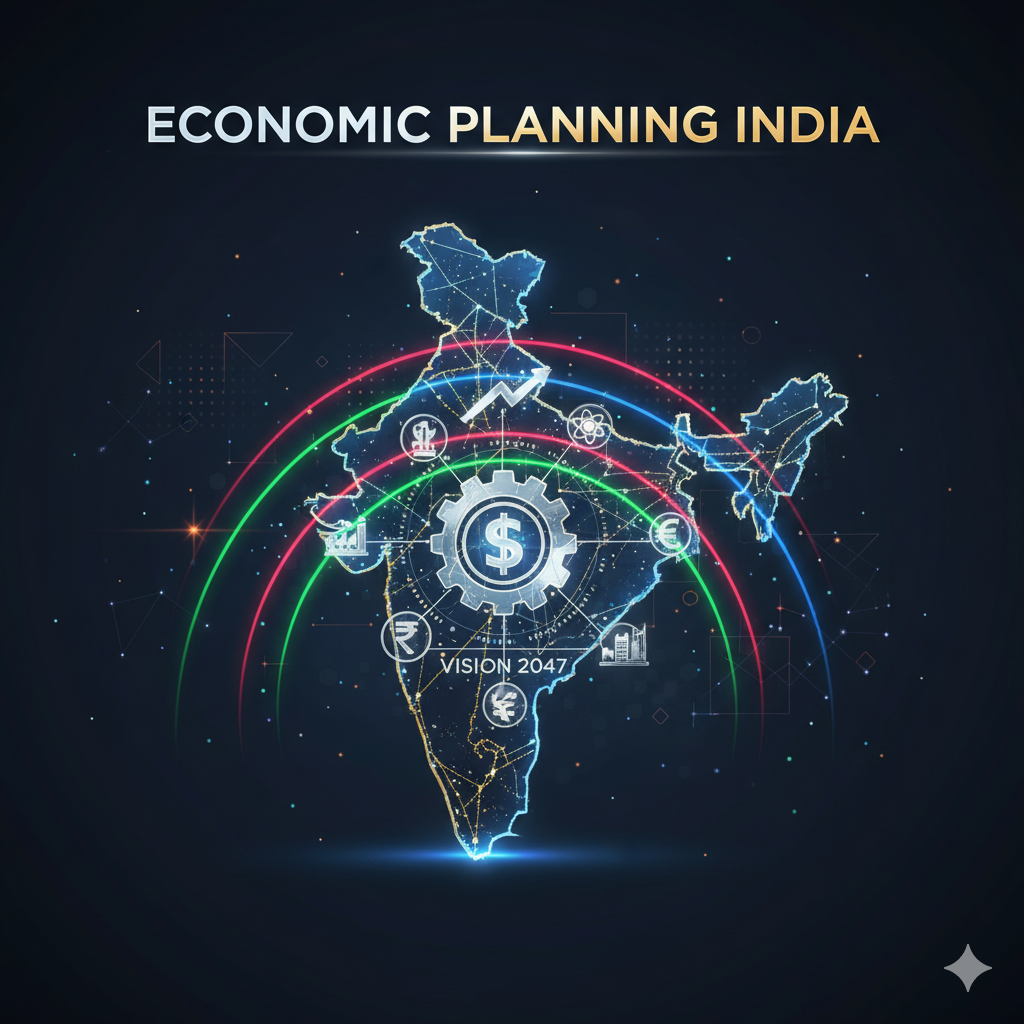The phenomenon of El Niño, a climatic event characterized by the warming of sea surface temperatures in the central and eastern Pacific Ocean, has a profound influence on global weather patterns, particularly in regions like India. In India, the South-West Monsoon, which is crucial for agriculture, is often disrupted by El Niño. This disruption leads to erratic rainfall patterns, which significantly affect agricultural productivity.
Understanding the intricate relationship between El Niño and the South-West Monsoon in India is crucial for assessing the potential impacts on agricultural systems, food security, and the economy. El Niño is not only a meteorological event but also an economic and social force, especially in a country like India, where a large portion of the population depends on agriculture.
The South-West Monsoon in India
Before delving into the impact of El Niño, it’s important to understand the significance of the South-West Monsoon in India. The monsoon season, typically from June to September, provides about 70-80% of India’s annual rainfall. This seasonal rainfall is the backbone of Indian agriculture, especially in the rainfed regions of the country.
The monsoon is primarily influenced by the difference in temperatures between the landmass and the ocean, which causes a shift in wind patterns. The winds from the Indian Ocean and the Arabian Sea carry moisture towards the subcontinent, leading to widespread rainfall. The arrival of the monsoon marks the sowing season for crops like rice, cotton, pulses, and maize. The success or failure of the monsoon directly affects the yield of these crops and, consequently, the rural economy.
What is El Niño?
El Niño is a natural climate phenomenon that occurs every two to seven years, though its intensity and duration can vary. It refers to the periodic warming of sea surface temperatures in the central and eastern equatorial Pacific Ocean, near the coast of South America. This warming alters atmospheric pressure patterns, disrupting global weather systems.
In the context of India, El Niño is often associated with a weakening of the South-West Monsoon. The warmer-than-usual sea surface temperatures in the Pacific Ocean affect the jet streams, which in turn influence the monsoon winds. As a result, regions that normally receive ample rainfall during the monsoon season may experience droughts, while others may experience excessive rainfall leading to floods.
How El Niño Affects the South-West Monsoon in India
The relationship between El Niño and the South-West Monsoon is complex, but there are several key ways in which El Niño influences the monsoon in India:
1. Weakening of Monsoon Winds
During an El Niño year, the Indian Ocean Dipole (IOD) and the Walker Circulation (a pattern of atmospheric circulation in the tropical Pacific and Indian Oceans) are both disturbed. These disturbances weaken the south-west monsoon winds, reducing the moisture-laden air from the Indian Ocean that typically brings rain to India. As a result, monsoon rainfall becomes less predictable and is often insufficient, leading to drought conditions in many parts of the country.
2. Delayed Monsoon Onset and Erratic Rainfall Patterns
In some El Niño years, the monsoon arrives late, and its progress is slow, which affects the timing of planting and harvesting of crops. The delayed onset of rainfall disrupts the sowing cycle, particularly for crops like rice, which require a specific amount of water during their growth stages. Even if rainfall occurs, it is often erratic, with the distribution of rain being uneven across regions, which further hampers agricultural productivity.
3. Reduced Rainfall in Key Agricultural Regions
El Niño has been linked to below-average rainfall in major agricultural regions of India, especially in the central, western, and northern parts of the country. These regions, including states like Maharashtra, Madhya Pradesh, Gujarat, Uttar Pradesh, and parts of Rajasthan, are heavily dependent on the monsoon for irrigation. When these areas receive less rain due to El Niño, it results in water shortages, crop failure, and a decline in overall agricultural productivity.
4. Increased Temperature and Evaporation
In addition to reduced rainfall, El Niño often leads to an increase in temperatures across India, further exacerbating drought conditions. Higher temperatures cause increased evaporation, reducing the amount of water available for crops. In some cases, this may lead to crop stress, lower soil moisture content, and reduced agricultural yield.
5. Impact on the Timing and Distribution of Rainfall
In an El Niño year, while some regions experience a shortfall in rainfall, other parts of the country may receive excess rainfall, leading to floods and waterlogging. The irregular timing and intensity of rainfall create challenges for farmers, as many crops are highly sensitive to water stress at different stages of their growth.
Impact of El Niño on Indian Agriculture
India’s agriculture is highly dependent on the monsoon for water, and any disruption in rainfall patterns has far-reaching consequences for the agricultural sector. El Niño’s effect on the South-West Monsoon, therefore, has significant implications for the country’s food security, rural livelihoods, and the economy as a whole.
1. Reduced Crop Yields
One of the most immediate impacts of El Niño on agriculture is the reduction in crop yields. Crops like rice, maize, pulses, and sorghum, which are sown during the monsoon season, are particularly vulnerable to inconsistent rainfall patterns. When rainfall is insufficient or delayed, crops may fail to grow properly, leading to lower yields. For instance, rice, which requires consistent water throughout its growing cycle, is highly affected by water scarcity, resulting in lower production.
2. Water Scarcity and Irrigation Issues
While some regions of India rely on the monsoon for rainfall, others depend on irrigation from rivers, lakes, and groundwater. El Niño can lead to water scarcity in these regions as rivers dry up, and groundwater levels decline. The reduced availability of water affects not only rainfed agriculture but also irrigated agriculture, leading to crop stress, inadequate irrigation, and, in extreme cases, complete crop failure.
3. Economic Losses
Agriculture is a critical sector for India, employing more than half of the country’s population and contributing significantly to the national GDP. When El Niño disrupts the monsoon and causes crop failure, it results in massive economic losses. Farmers may lose their livelihoods, leading to increased poverty and economic instability in rural areas. Additionally, reduced agricultural output may lead to higher food prices, which affects urban consumers and creates inflationary pressure.
4. Impact on Livestock and Fisheries
In addition to crop failures, El Niño also affects livestock and fisheries in India. Drought conditions reduce the availability of grazing land and water for animals, leading to livestock deaths. Furthermore, changes in ocean temperatures during El Niño disrupt marine ecosystems, affecting fish populations and, in turn, the livelihoods of those dependent on fishing.
5. Increase in Rural Migration
The failure of the monsoon and the subsequent collapse of agricultural systems often force farmers and rural workers to migrate to urban areas in search of alternative livelihoods. This rural-to-urban migration puts additional pressure on urban infrastructure and services, creating socio-economic challenges for both rural and urban areas.
6. Increased Vulnerability of Marginalized Farmers
Small and marginal farmers, who are already at a disadvantage in terms of resources and access to technology, are disproportionately affected by El Niño. These farmers often lack access to irrigation systems, modern farming techniques, and financial resources to weather the adverse effects of droughts or floods. As a result, they are more likely to suffer crop losses, increased debt, and poverty.
7. Effect on Food Security
India is home to a large population, with millions relying on agriculture for their sustenance. El Niño-induced disruptions in the monsoon lead to a decrease in food production, particularly in staple crops like rice, wheat, and pulses. This decline in food production contributes to food insecurity, affecting both rural and urban populations.
Mitigating the Impact of El Niño on Agriculture
Given the critical impact of El Niño on India’s agriculture, it is essential to adopt strategies to mitigate its effects:
- Improved Weather Forecasting and Early Warning Systems: Accurate forecasting of El Niño events can help farmers prepare in advance by adjusting their sowing patterns, crop choices, and irrigation practices.
- Water Conservation and Efficient Irrigation: Adopting efficient irrigation techniques such as drip irrigation, rainwater harvesting, and groundwater recharge can help reduce water stress during drought periods.
- Climate-Resilient Crop Varieties: Developing and promoting drought-resistant crop varieties can help ensure stable yields during periods of water scarcity.
- Diversification of Crops: Encouraging farmers to diversify their crop portfolio and incorporate climate-resilient crops can reduce their vulnerability to crop failure.
- Government Support and Financial Aid: The government should provide financial support and insurance schemes for farmers, especially in regions most affected by El Niño.
Conclusion
The relationship between El Niño and the South-West Monsoon in India is one of cause and effect, with El Niño often leading to disruptions in monsoon rainfall. This disruption has wide-ranging consequences for agriculture, from reduced crop yields to economic losses and food insecurity. As India continues to be vulnerable to the impacts of El Niño, it is crucial for the government, agricultural institutions, and farmers to adopt strategies that increase resilience to climate variability. With the right measures, India can mitigate the negative effects of El Niño, ensuring a more stable and sustainable agricultural future.




